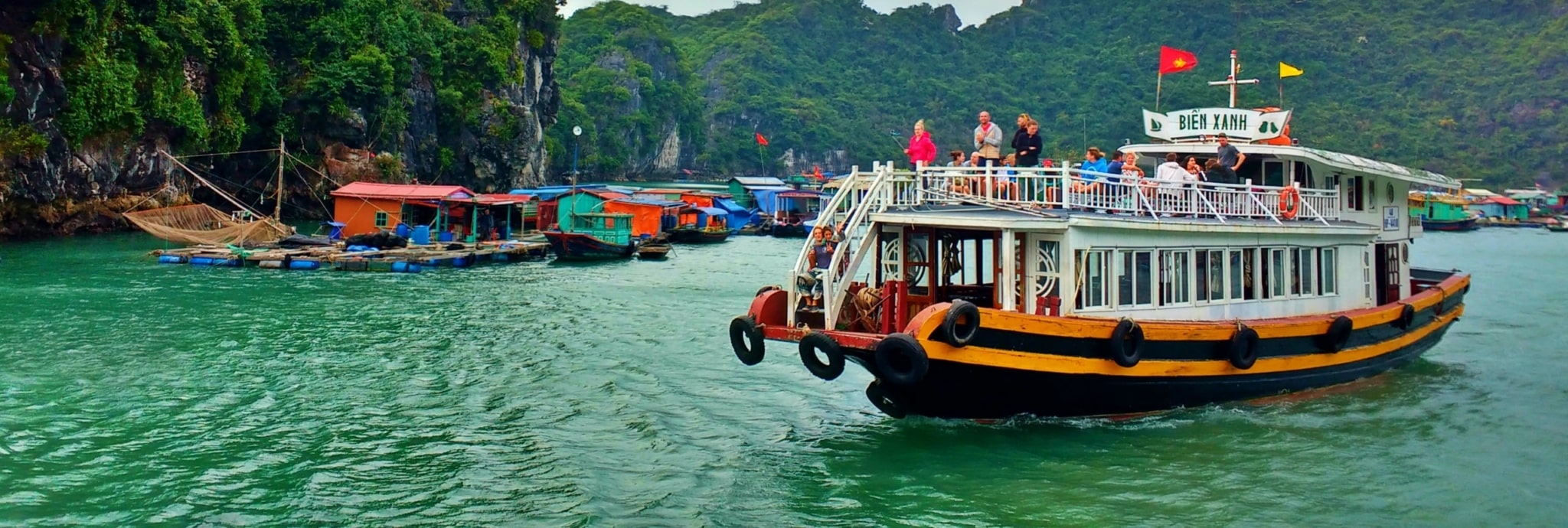
I had been on several trips with with tour companies, but this was the first experience of its kind. On this particular tour, a number of professionals had come together to enjoy discovering Vietnam. There were doctors, engineers, IT professionals and successful businessmen. The itinerary was well-designed. Everyone was enjoying the journey and making friends.
On the last leg of the journey, we were on a cruise in the beautiful Halong Bay. Some of us were on the deck singing and dancing. Down below in one of the cabins, a medical emergency was taking place.
Schedule a call with a Pragati Leadership expert to discuss how we can support your strategic objectives.
Schedule your CallDr M had been suffering from chest pain for the last 3 days. He downplayed the pain, saying that it was probably just acidity. This night, the pain got worse. He reached out for help. Another doctor, Dr Deepak, a specialist in internal medicine, was called in to check on Dr M. One look at his face, and Dr Deepak insisted that the patient be rushed to hospital. A speed boat was called for. Dr Deepak, the local tour guide, Mr Spring, Dr M and another friend got on. As the speed boat started, the passengers noticed that the boat had no lights! It was pitch dark and the Bay has several limestone islands to circumnavigate. This stressed the patient further. However, the boat driver navigated the vehicle skillfully.
The group reached the government hospital. To their surprise, they found that the doctors there were unable to understand English or even the medical terms they tried to communicate to them. That’s where the local guide played a very important role. He was able to translate Dr Deepak’s diagnosis to the doctors in the hospital. Once this was cleared up, the local doctors sent Dr M for testing to zero in on the exact issue. Then came the next obstacle.
Every foreign trip includes a mandated medical insurance. Our group was told that the insurance we had purchased was not on the hospital’s list. To begin the tests, cash in dollars – and a huge amount at that – would have to be paid up front. The group was now in a fix. Where would they organize so much money in the middle of the night? Dr Deepak contacted the tour owner, who immediately spoke to one of the businessmen on the tour and a few hundred dollars were arranged. The remaining amount was arranged through the local partners of the tour company.
Finally, the tests commenced. The doctors realized that there was a 90% heart blockage in Dr M’s heart! They decided to insert a stent. Angioplasty was done and finally Dr M felt the pain subside.
This was a real-life, real-time demonstration of team work and networking. Each person in this chain of events played a vital role drawing on their strengths. If Dr D hadn’t urged for hospitalization, if the speed boat driver had not navigated the bay so skillfully, if the local guide wasn’t able to translate between the tour group and the local doctors, and if the money was not arranged in time, we could well have lost Dr M.
This experience was scary, but it had a good outcome. It showed me that we are more, together – more resourceful, more capable, more effective. One person cannot have all the skills needed to cope with a situation, but together, we can pool in our strengths and resources and overcome any obstacle.
What experiences have you had with teamwork in unexpected situations? I would love to hear from you!
Share on Social Channels
Our Categories
Categories
- Behaviorial (6)
- Blog (240)
- Coaching (8)
- Corporate Trainers (6)
- Developing Collaboration (12)
- Emotional Intelligence Training (11)
- Executive Leadership Program (26)
- First Time Manager Training (10)
- Inspirational Leadership (17)
- Inspiring and Successful Leadership Awards (16)
- Leadership Awards (37)
- Leadership Development (118)
- Leading Virtual Teams (6)
- Management Development (29)
- Marketing (2)
- Negotiation Skills Training (5)
- Organizational Transformation (24)
- Others (24)
- Stakeholder Management (3)
- Strategic Leadership Development Program (3)
- VUCA Leadership (2)
- Wholesome Leadership (23)
- Women Leadership (15)
Recent Insights
Aspiring to be seen as an effective leader? Learn about developing your executive presence (EP);...
Leaders can no longer rely on outdated command-and-control approaches. Looking ahead, we envision a future...
Having a strong leadership pipeline is more important in today’s dynamic environment than ever before....
Congratulations! You have been promoted to a managerial position. This promotion is most likely the...
Leaders in today’s dynamic and fast-paced world need more than technical skills, strategic thinking, and...
